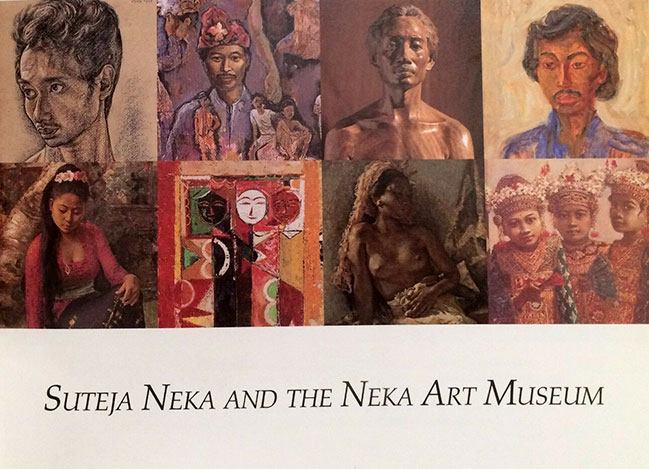Suteja Neka and the Neka Art Museum
Art activities are inseparable from the lives of the Balinese community. Almost all facets of Balinese life are inseparable from a touch of art. In Balinese culture, art activities are materialization of bakti “ngayah” (devote oneself to a particular cause or ceremonial activity without any expectation of payment or reciprocity) for the Hyang Widhi (God) and the social environment. They make art pieces as tool of worship laden with morality and virtue messages usually based on the ancestors’ guidance, e.g. Mahabharata, Ramayana and folklores. Since they were little, Balinese are accustomed to arts activities; their creativity is sharpened since a very young age to produce amazing work of arts. This factor makes this island so charmingly “taksu” (spiritual power, the indescribable essence of spirit), and famous all over the world.
The charm or taksu in which the island glows with have attracted many visitors, many of them come in search of inspirations. The beauty of nature and the richness in culture on this island have become the water spring that produces fresh ideas for artists. Millions of artists have been inspired by the uniqueness of Bali. History has recorded Walter Spies, Rudolf Bonnet until Arie Smit and many more artists who claimed that they found their passion of arts in Bali. The high quality masterpieces were also born on this island of the gods.
In line with the speeding development of tourism, in which this little island has received more visitors now, there is an increase in the demand of typical Balinese artwork or paintings by foreign collectors. Many say that the best art pieces of Balinese artists are kept in museums or galleries outside Bali. There is lack of attention to arts here. Let us hope that the younger generation of Bali who wish to study about the art development of their ancestors will not need to go abroad.
Pande Suteja Neka is a figure who we must appreciate for his actions in preserving and developing the paintings in Bali. Born and raised within an artist family, Suteja Neka grew up into someone who has high level of sensitivity towards the works of arts. This book, entitled Suteja Neka dan Museum Neka, elaborates about his journey in pioneering the preservations of Balinese fine arts. Suteja Neka is inseparable from the Neka Museum, the Neka Museum is the heart and soul of Suteja Neka.
Suteja Neka confessed that his father, I Wayan Neka, is his life inspiration. Together with his wife, Ni Gusti Made Sarimin, who faithfully accompanies his adventure, Suteja Neka started with a small shop in Ubud. Seeing the increase in the displacement of Balinese work of arts, in line with the development of tourism, made Suteja Neka aware of the importance of preservation in works of arts in sustainable manner. Through the Neka Museum, built in Ubud in 1975, Suteja Neka presents an inspiration house for those with high regards for the value and majesty of Indonesian work of arts. This is a valuable donation in preservation and documentation of Indonesian work of arts, especially Balinese paintings.
This book by Garret Kam presented a story behind the big name of Suteja Neka dan Museum Neka, and also feature the journey of the development of Balinese fine arts through the photos from the Neka Museum collection. This book is very inspiring, a recommended reading for Balinese young generation and art lovers.
This book could be found at Komaneka Fine Art Gallery.

